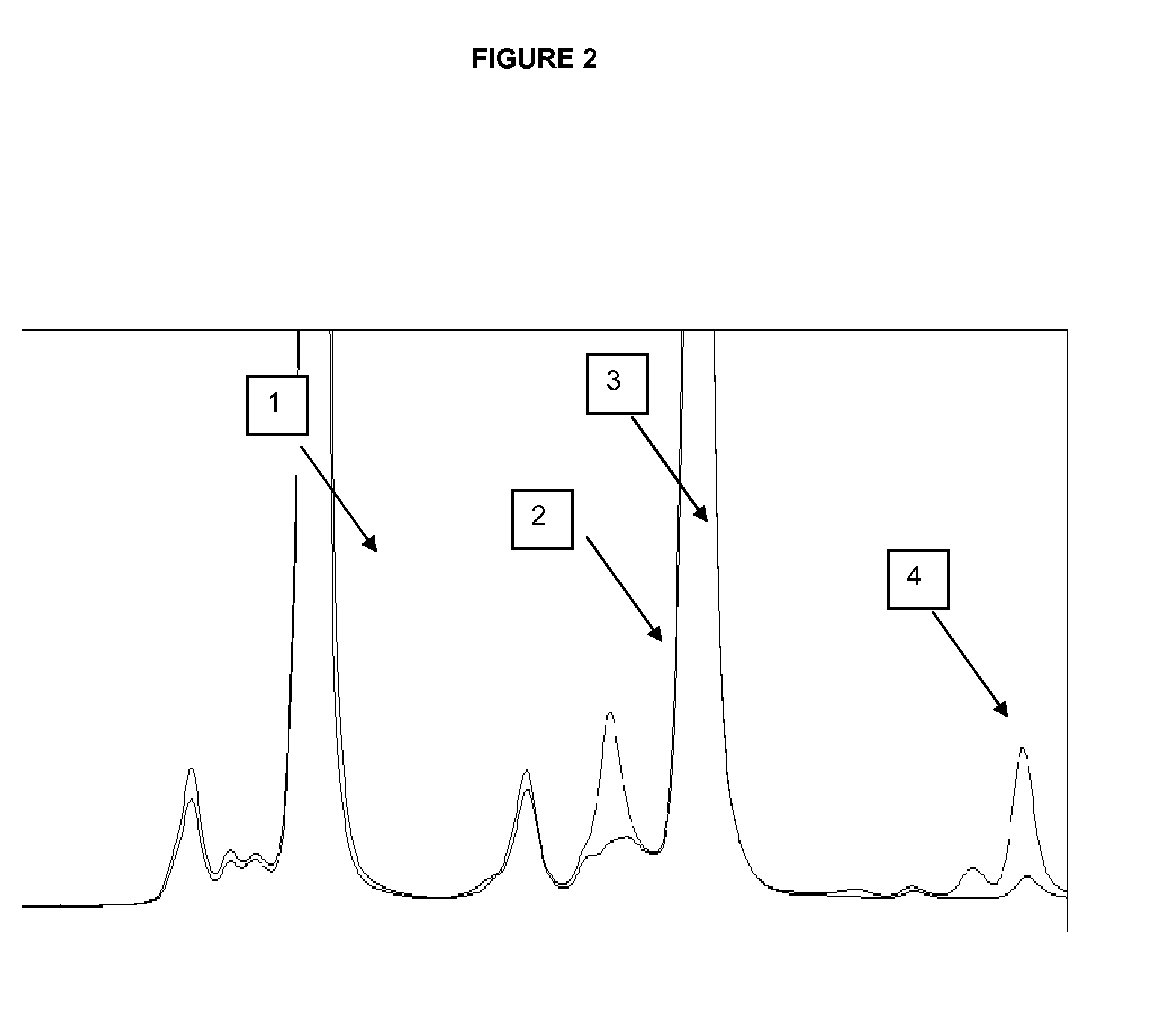Transglutaminase Variants with Improved Specificity
a transglutaminase and variant technology, applied in the field of transglutaminase variants, can solve the problem that the selectivity of hgh mediated conjugation is therefore potentially hampered, and achieve the effect of improving the specificity of the si
- Summary
- Abstract
- Description
- Claims
- Application Information
AI Technical Summary
Benefits of technology
Problems solved by technology
Method used
Image
Examples
example 1
Cloning of Propeptide-mTGase in GlyPro-TGase Form and Mutant Generation
[0228]TGase from Streptoverticillium ladakanum ATCC27441
[0229]The sequence of Propeptide-mTGase from S. ladakanum (Propeptide-mTGase is the peptide, which is the result of the expression of the DNA encoding TGase from S. ladakanum in another organism, such as E. coli) is shown as SEQ ID No. 3. The propeptide-part is aa 1-49 of SEQ ID No. 3 and the rest of sequence was the mature mTGase as shown in SEQ ID No. 1. The mature mTGase part (SEQ ID No. 1) has 93.4% identity to that of mTGase from S. mobaraensis (SEQ ID No. 2) as shown in FIG. 1.
[0230]A 3C-protease sequence LEVLFQGP (3C) was cloned between the propeptide-domain (aa 1-49 of SEQ ID No. 3) and mature mTGase domain of Propeptide-TGase of S. ladakanum. The 3C-protease cleaves specifically between the Q and the G of the LEVLFQGP site, which resulted in two additional amino acid residues, Gly-Pro to be added to the N-terminus of the mature mTGase (shown in SEQ ...
example 2
Preparation of TGase Mutants with Added N-Terminally Amino Acid Residues
[0232]Preparation of GlyPro-mTGase
[0233]The pET39b_Met-Propeptide-(3C)-mTGase / E. coli BL21(DE3) cells were cultivated at 30° C. in LB medium supplemented with 30 μg / ml kanamycin to an optical density of 0.4, and the cells were induced with 0.1 mM IPTG for another 4 h. The cell pellet was harvested by centrifugation.
[0234]The soluble fraction from the cell pellet was extracted and purified with anion exchange, Q-sepharose HP, column to obtain pure Propeptide-(3C)-mTGase protein. This protein was then digested with 3C-protease (from poliovirus) at 1:100 (w / w) ratio to the Propeptide-(3C)-mTGase protein at 20° C. for overnight. The digestion mixture was further purified by cation-exchange column, SP Sepharose HP / Source 30S, for active mTGase, which is identified by TGase activity assay.
[0235]Preparation of AlaPro-mTGase
[0236]AlaPro-mTGase was produced in a similar way as GlyPro-mTGase except the digestion of propep...
example 3
Preparation of TGase Mutants with Added N-Terminally Amino Acid Residues Using Cation Chromatography
[0239]Preparation of GlyPro-mTGase (Tyr62His,Tyr75Phe)
[0240]The pET39b_Met-Propeptide-(3C)-mTGase-SL Tyr62His, Tyr75Phe / E. coli BL21(DE3) cells were cultivated at 30° C. in LB medium supplemented with 30 μg / ml kanamycin to an optical density of 0.4, and the cells were induced with 0.1 mM IPTG for another 4 h. The cell pellet was harvested by centrifugation.
[0241]The soluble fraction from the cell pellet was extracted and purified with cation exchange as described in Example to obtain pure Propeptide-(3C)-mTGase protein. This protein was then digested with 3C-protease (from poliovirus) at 1:100 (w / w) ratio to the Propeptide-(3C)-mTGase protein at 20° C. for overnight. The digestion mixture was further purified by cation-exchange column, SP Sepharose HP / Source 30S, for active mTGase and ethylene glycol was added to the purified mTGase to a concentration of 20%.
PUM
| Property | Measurement | Unit |
|---|---|---|
| Fraction | aaaaa | aaaaa |
| Selectivity | aaaaa | aaaaa |
Abstract
Description
Claims
Application Information
 Login to View More
Login to View More - R&D
- Intellectual Property
- Life Sciences
- Materials
- Tech Scout
- Unparalleled Data Quality
- Higher Quality Content
- 60% Fewer Hallucinations
Browse by: Latest US Patents, China's latest patents, Technical Efficacy Thesaurus, Application Domain, Technology Topic, Popular Technical Reports.
© 2025 PatSnap. All rights reserved.Legal|Privacy policy|Modern Slavery Act Transparency Statement|Sitemap|About US| Contact US: help@patsnap.com



